All about the power of diesel generators

Outside of large cities, even in our time, periodic power outages are not very rare, and without the usual technology, we feel helpless. To provide electrical appliances in your home with uninterrupted power, you should consider buying a diesel generator, which, by burning fuel, will provide much-needed current. At the same time, in order to fully ensure the normal functioning of all systems, a unit of a certain capacity is needed, which each buyer calculates for himself.
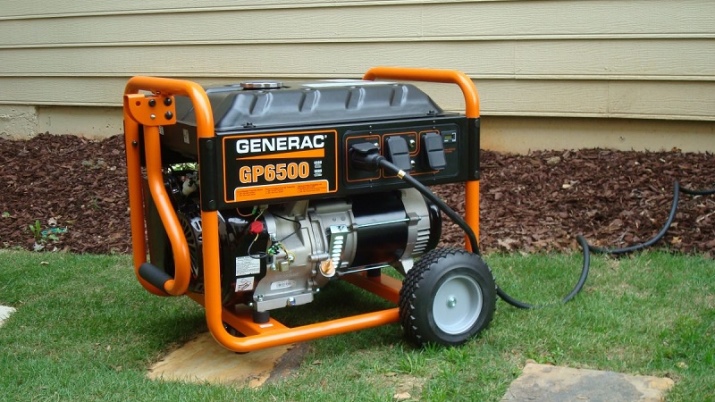
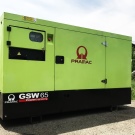
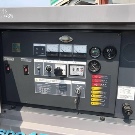
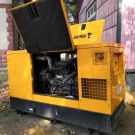


What is the power?
Modern diesel generators cater to all types of consumers - those who need power only for the garage, and those who want to guarantee uninterrupted power supply for the entire enterprise. Let's pay attention right away that power is measured in watts and kilowatts and has nothing to do with voltage, measured in volts. The voltage is also important to know in order to understand the compatibility of the device with the electrical appliances used, but this is a completely different indicator. A single-phase diesel generator produces 220 volts (standard socket), three-phase - 380.
A powerful electric generator is initially more expensive and requires more load for its full operation. - therefore, with an incomplete workload, it is simply impractical. For easier orientation of the buyer in the variety of available models, there are three categories of generator power.
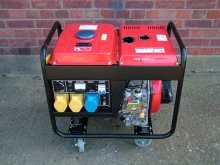


Small
There is no exact division of generators into power groups, but the most modest household and semi-industrial models should be separately taken out - they are usually used either in private households or in small workshops and in modest-sized enterprises. In this case, devices for different purposes can be distinguished. The power of generators in the lines of major manufacturers starts from a modest 1-2 kW, but in fact these are purely garage solutions. Any device from the category of reactive technology (we will talk about this below) can become a problem for such a device, even alone, and there are such units in every home.
For this reason, even for a modest country cottage, it is better to choose solutions of at least 3-4 kW, and even then with the obligatory condition that you do not use water pumps for irrigation. Otherwise, get by with a minimum of other technique. For a full-fledged house or apartment of small size and a small population, devices from 5-6 kW are already needed.
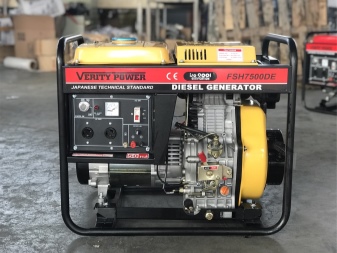
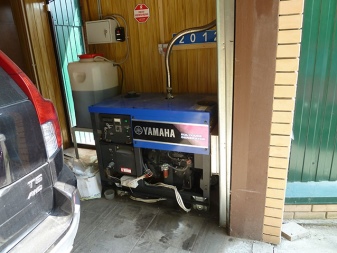
A further increase in power may be associated with an increase in the number of consumers or the technology they use. In an ordinary house the size of an average apartment, where a typical family of 3-4 people lives, 7-8 kW should be enough. If this is a large estate on two floors, ready to receive guests at any time, then 10-12 kW will not be superfluous. All sorts of "bonuses", such as powered garages, workshops and gazebos on the territory, as well as the use of garden tools and an electric vortex, make it justified to use equipment with a capacity of even 15-16 kW.
Units with a capacity of 20-25 and even 30 kW can still be considered low-power, but their use by one family is already completely unreasonable. They are designed either for small industrial workshops, or for associations of tenants, such as several apartments in the entrance.


Average
Although in this article we consider such diesel generators as medium power devices, they usually have enough to solve all problems, and with a margin. Units with a capacity of 40-45 kW can already be used by entire organizations, for example, a small rural school, where there is really no equipment, except for lighting devices. 50-60 kW - this is even more powerful equipment, which will be enough to provide any workshop or cultural center. 70-75 kW cover the needs of absolutely any school.
A capacity of 80-100 kW, in theory, will be enough even for a five-story entrance, if residents find a common language regarding the purchase of equipment, the purchase of fuel and monitoring equipment. Even more powerful devices, for 120, 150, 160 and even 200 kW, in the residential sector are usually used only in the countryside, where they provide backup power to local low-rise apartment buildings.
Also, the use of such equipment is possible at various enterprises.
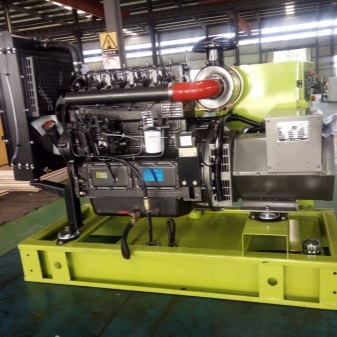

Big
It is difficult to come up with a full-fledged domestic application for powerful diesel generators from 250-300 kW - except that they are operated by a whole five-story building, which happens very rarely. This approach is also not very good because in the event of a breakdown of the backup source, a huge number of people will be left without energy. It would be more logical to put two or three power plants smaller than one powerful 400-500 kW. At the same time, the needs of huge enterprises can be even higher, and too much can depend on the smooth operation of their work. Some types of production must be strictly uninterrupted, not be out of schedule, because they, even located in regions where power outages were not noticed, need heavy-duty diesel generators of 600-700, or even 800-900 kW.
In the model lines of individual manufacturers, you can also find almost complete power plants with a capacity of 1000 kW - they can be used, for example, for organizing festivals. If the consumer does not have enough power even for the most expensive diesel electric generator, but he still wants to provide himself with backup power sources, you can power the necessary objects from several different generators. This will also make it possible to partially insure against the failure of a piece of equipment.
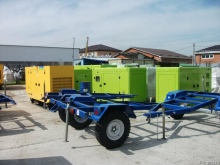
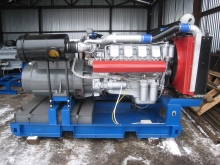
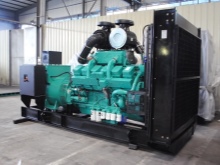
How to choose a generator?
So that the cost of an electric generator and its average fuel consumption do not suggest that the investment does not justify itself, you should purchase a model that, while covering the needs of the operators, will not exceed them too much. Each generator has two key characteristics - nominal and maximum power. The first is the amount of electricity that the unit can produce continuously and regularly.without experiencing overloads and working in the mode that assumes long-term operation, comparable to that promised by the manufacturer.
The second is the possible generation of electricity in a wear-and-tear mode - the generator still copes with the tasks set, but literally drowns in the process. It is generally accepted that, when calculating the necessary characteristics of a future purchase, it is necessary to choose it so that your energy consumption does not exceed the rated power, then the “reserve” of maximum power will be a margin just in case.

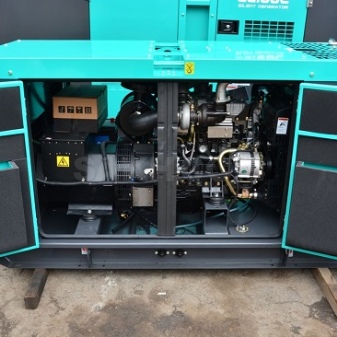
Short-term operation at maximum power, although it reduces the service life of an autonomous power plant, does not break it immediately. Secondary peak loads are possible with the simultaneous launch of some types of reactive household appliances. In fact, this approach is also not very correct, because conscientious manufacturers specify: it is advisable to load the generator with no more than 80% of its rated power. More precisely, you will surely go beyond this indicator sooner or later, but 20% of the margin will most likely allow the consumer to stay within the rated power.
Choosing a generator on this principle, you take responsibility for some overpayment at the time of purchase and further, during operation. The logic is that the backup power supply will always be in order and will last for a really long time.

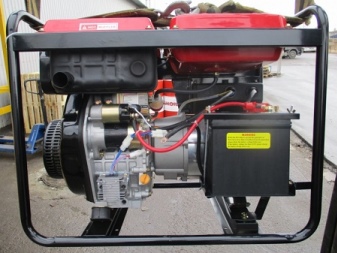
How do you calculate performance?
The entire load on the power grid can be divided into active and reactive. Some electrical appliances create only a resistive load - this means that when they are switched on, they always consume approximately the same amount of energy. Such devices include, for example, televisions and most lighting devices - they work at the same brightness, there are no drops or jumps in their work. Reactive devices are usually equipped with an electric motor that has the ability to operate in different modes and, therefore, with different energy consumption. A striking example is a modern refrigerator or air conditioner, which is tasked with providing a certain temperature. It is clear that in extreme heat, they automatically apply more effort and show more power.
A separate point that further complicates the calculations is the so-called inrush currents. The fact is that some devices at the time of start-up consume several times more electricity for a short moment than in normal operation. If you drive a car, you probably know that ignition can drain the battery very quickly, but the remaining charge can last for a very long time. Many other types of equipment work according to the same principle, including the already mentioned refrigerator, only the coefficient of inrush currents (the same peak load) is different for them. You can find this indicator in the instructions for the device or, in extreme cases, on the Internet - averaged for the entire category of such equipment.



Therefore, the easiest way to calculate the desired diesel generator power is to add up the power of all the appliances as if they were simultaneously consuming the maximum maximum power. It means that it is necessary to add together the power of active devices and the maximum power of reactive devices, and for those of them whose inrush current ratio exceeds one, these indicators must be multiplied in advance. To the resulting amount of watts, you need to add 20-25% of the margin - we get the rated power of the required diesel generator.
In practice, they do it a little differently, trying to save money and not overpay in vain. If the power supply is only a standby, this approach is quite acceptable. Most likely, at no point in time will you have absolutely all the devices in the house turned on, and even more so devices with a high inrush current ratio will not start all at once in the same second. Accordingly, in search of an adequate recommended power, the maximum consumption of only those devices that are most relevant and, in principle, cannot be turned off, are summed up - these are refrigerators and heaters, water pumps, alarms, etc.
It is logical to add a few amenities to the resulting amount - you will not sit in the dark for several hours, even with a working refrigerator. If the conditional wash waits, the washing machine is not included in the calculations.
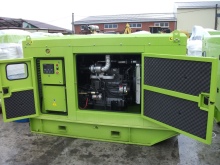

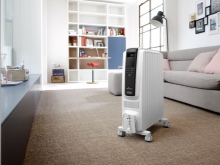













The comment was sent successfully.